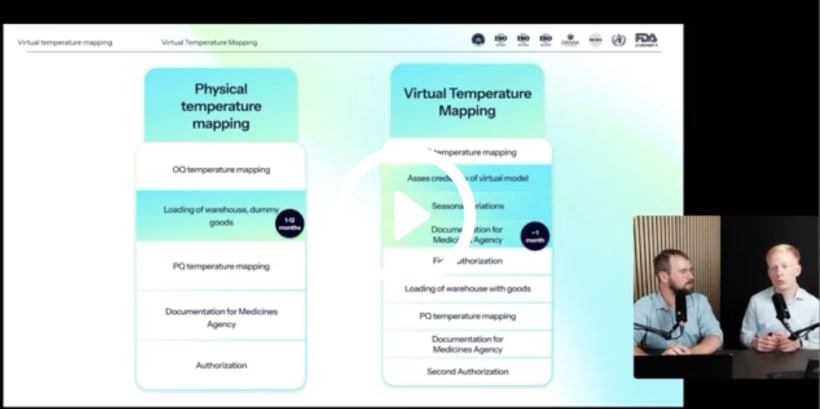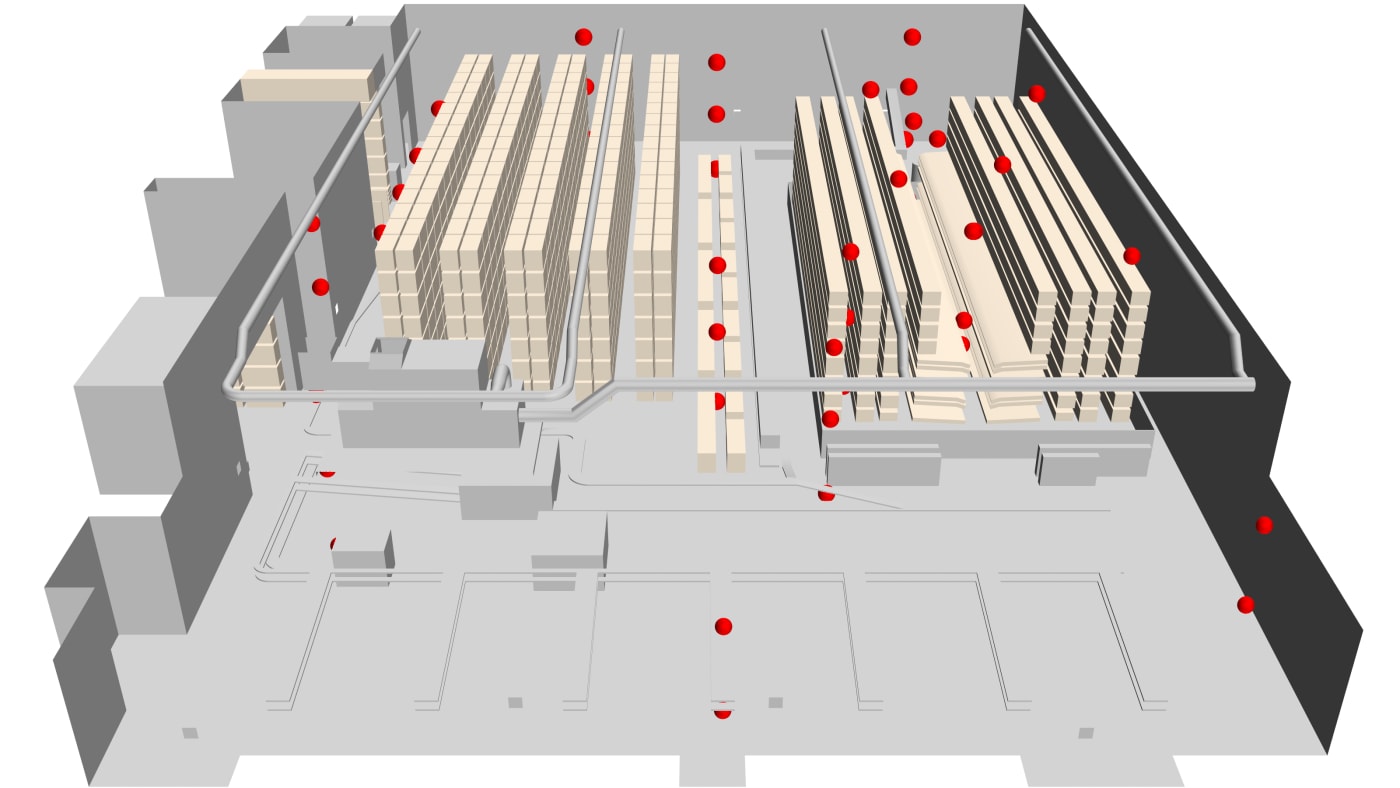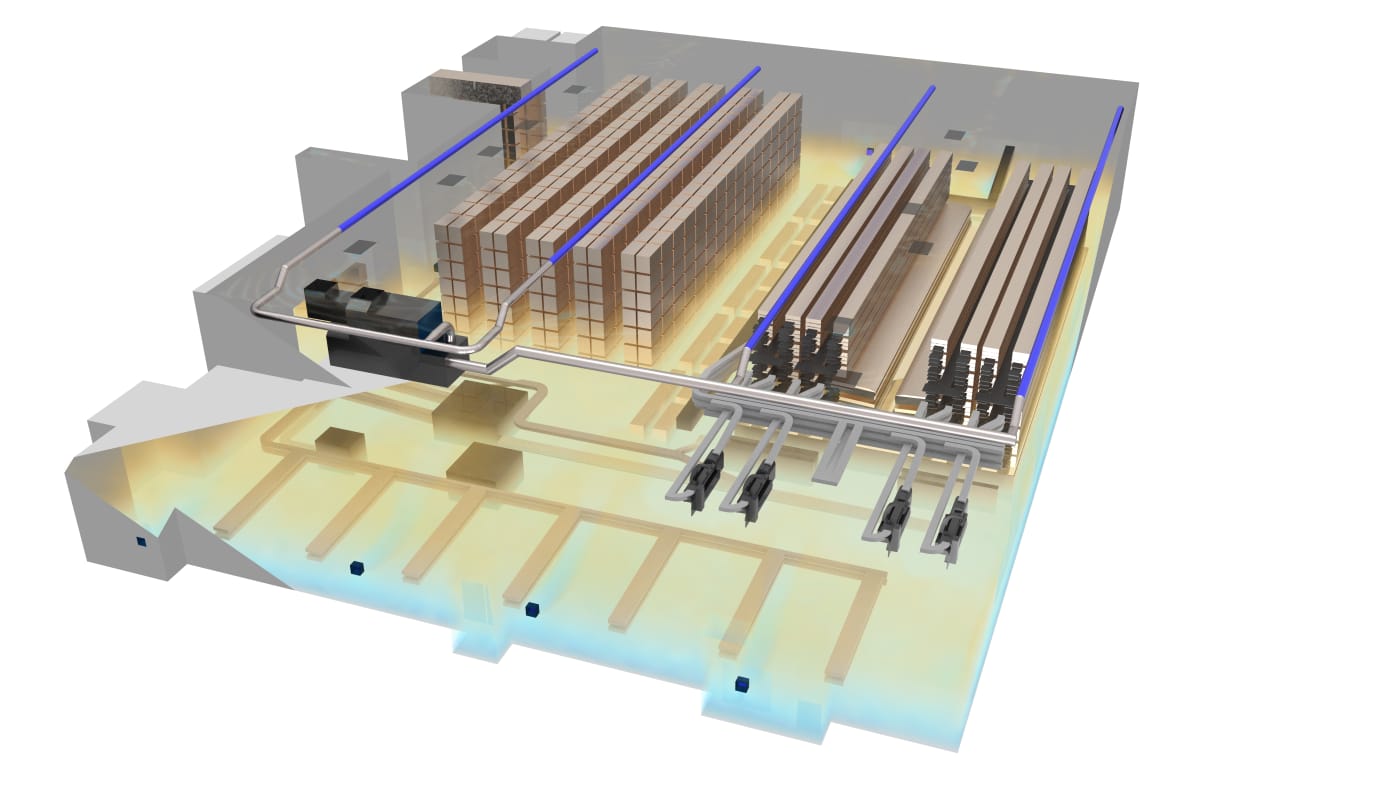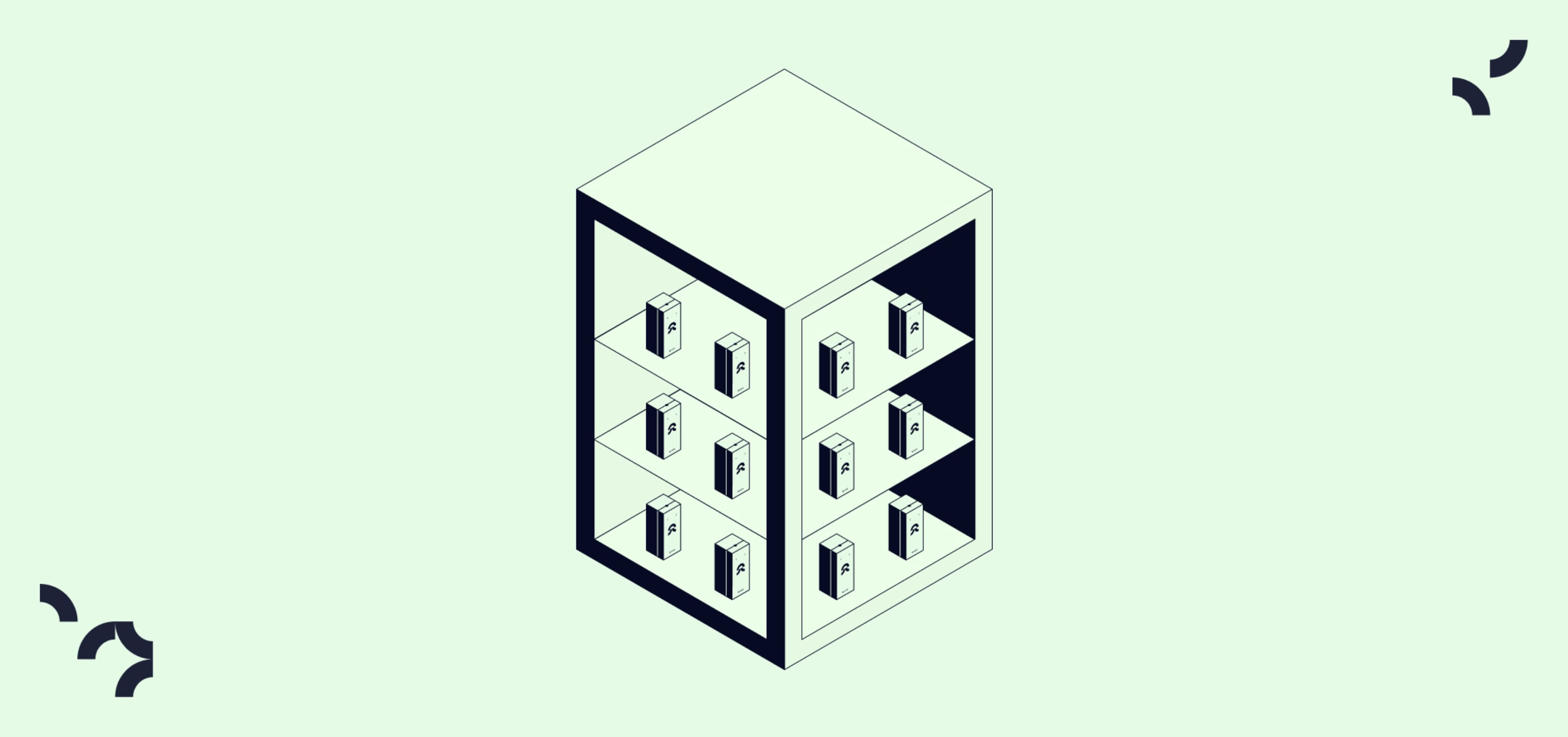
Virtual temperature mapping in GxP – how and why?

Jakob Konradsen

Understand the virtual temperature mapping framework, its applications, and how it, when utilized properly, can lead to faster commissioning time and lowered validation costs for both new and retrofitted facilities.
As operational efficiency and fast facility commissioning become more and more important in pharma, healthcare logistics, and similar GxP sectors, virtual temperature mapping is becoming an increasingly adopted tool.
Utilized correctly, the method can help improve quality, enable faster go-live, and minimize costly surprises during validation of newly constructed or retrofitted facilities.
But how does the virtual mapping process work? Is it relevant for your mapping project? And will the method replace physical temperature mapping?
This article outlines everything you need to know about the virtual temperature mapping methodology, including:
- What is virtual temperature mapping, and how does it work?
- When and where to use virtual temperature mapping?
- 5 benefits of virtual temperature mapping
- Whether virtual mapping will replace physical mapping
- Which input is required for virtual temperature mapping
- The risks involved in virtual temperature mapping

On-demand webinar: Guidelines for VIRTUAL mapping
Explore the virtual temperature framework's use cases, pitfalls, etc. in our free on-demand webinar.
Also read: Virtual temperature mapping solutions for GxP - how it works?
What is virtual temperature mapping?
Virtual temperature mapping uses computational fluid dynamics (CFD) simulations to model airflow patterns and temperature distribution inside temperature-sensitive spaces like warehouses, cold rooms, or other temperature-controlled storage areas.
By simulating the airflow within a room using CFD, a virtual mapping can model extreme conditions, such as peak summer or winter scenarios. This makes it possible to proactively identify and address potential issues in these extreme conditions, preventing unexpected problems during subsequent physical temperature mapping.
How does virtual temperature mapping work?
- Create a virtual model: Based on blueprints, HVAC specifications, and similar facility information, CFD is used to create a digital model of the warehouse or other facility.
- Simulate airflow and temperature: The virtual model simulates the airflow and temperature behavior across different conditions and shows how air moves, where temperature deviations occur, and which areas may become hot or cold spots.
- Optimize your setup: The data can be used to guide sensor placement, improve HVAC layouts, or identify risk areas before any physical mapping begins.
- Speed up physical mapping: Once the facility is ready, the simulation data from the virtual mapping can be used to reduce test cycles, avoid surprises, and speed up validation.
Also read: Where to place data loggers during temperature mapping?

Image: Replicating the temperature loggers of the physical mapping 1:1
Use case: When and where to use virtual mapping?
Virtual temperature mapping is relevant for GxP-regulated facilities where operational efficiency and high quality levels are both key priorities.
What kinds of facilities is virtual temperature mapping suited for?
Virtual mapping can be applied in any temperature-controlled environment, but the method delivers the most value in larger or more complex facilities such as warehouses, distribution centers, and cleanrooms, where physical mapping requires a lot of resources to validate multiple scenarios.
When should virtual mapping be used?
The virtual method can be utilized in the validation process of new and retrofitted facilities as well as to optimize building layouts before construction.
The process can, for instance, be useful for:
- Quality assurance and validation professionals who are responsible for meeting compliance standards while managing timelines and limited physical access to the space.
- Operations and logistics teams who need to get new facilities up and running quickly, without compromising quality.
- Facility and project managers who are involved in HVAC design, warehouse layout, or retrofitting projects and want to make proactive decisions before construction or remodeling begins.

Image: Visualisation of warm (red) and low (blue) temperatures in warehouse.
5 benefits of virtual temperature mapping
1. Faster facility commissioning
By combining a virtual model with a reduced physical mapping setup, you can qualify your facility in stages and avoid unnecessary delays. Virtual temperature mapping helps identify risk areas upfront, so corrective actions can be taken early, before physical mapping even begins. This shortens the time from construction to validated use and supports earlier go-live dates without compromising compliance.
2. Validate design or operational choices before changes are made
Virtual temperature mapping allows you to identify and address non-compliance risks and validate decisions early in the design or retrofit process before construction is complete or changes are implemented. By testing the effectiveness of HVAC layouts, insulation strategies, and storage configurations, you can minimize late-stage changes, eliminate costly rework, and make sure the facility meets GxP requirements from day one.
3. PQ without dummy loads
Virtual temperature mapping makes it possible to delay the physical performance qualification (PQ) until the facility is operational and real products are in place. By virtually simulating a fully loaded warehouse, you can avoid setting up time-consuming placeholder loads like cardboard boxes or plastic-wrapped pallets. This lowers labor costs, minimizes waste, and frees up facility time for actual operations instead of prolonged testing.
4. Unlimited scenario testing
With virtual mapping, you can simulate how a wide range of scenarios, like door openings, specific load configurations, HVAC settings, or extreme seasonal temperatures, would impact your space without having to recreate those conditions physically. Running these simulations helps identify potential non-compliant zones early and allows you to validate performance under differing conditions. This not only boosts confidence in your facility’s stability but also lets you correct critical issues before they lead to deviations during physical mapping or live operation. When the CFD model confirms compliance under extreme cases, it strongly indicates that performance will remain within limits during day-to-day use.
5. More insights than physical mapping alone
CFD-based mapping shows airflow and temperature trends across the entire space, not just at the locations where sensors are placed. This gives you a more complete picture of potential hot or cold spots and the dynamics behind them, adding a new layer of understanding to your validation process.
By identifying risk areas in advance, you can also utilize the virtual insights to place sensors more strategically during physical studies. This improves data quality, can reduce the amount of data loggers needed and the following costs, and makes it easier to justify sensor placement during audits.
Will virtual temperature mapping replace physical mapping?
The short answer is no. Virtual temperature mapping is not meant to replace physical mapping. Instead, the method will complement and make traditional validation approaches more efficient.
Virtual mapping’s strength is its ability to model scenarios, such as peak seasonal temperatures or a fully loaded warehouse, and test conditions without the need to set up or wait for those situations physically. Physical temperature mapping remains the most accurate method for capturing the real-world temperature behavior of a facility at a specific point in time. It reflects how the environment performs under actual operating conditions, using real sensors in a real space.
By combining virtual and physical mapping methods, it is possible to validate compliance under both real and theoretical conditions, gain earlier insights, and reduce unnecessary physical testing effort.
Also read: Temperature mapping: Tips, frameworks, and pitfalls

Image: Example of virtual results for ambient storage.
The input required for virtual temperature mapping
To run a reliable virtual temperature mapping simulation, a few key pieces of facility data are required. Most of this information is already available as part of typical facility documentation and would be the same information required for a physical mapping, such as:
- Blueprints and layout drawings: Detailed floor plans of the room or facility being mapped, including dimensions and storage structures.
- HVAC specifications: Information on airflow rates, supply and return/exhaust positions, temperature setpoints, and control logic.
- Thermal properties of walls, floors, and ceilings: Data on insulation type, wall materials, and thermal conductance.
- Heat sources: Any significant internal heat loads, such as machinery, lighting, loading cranes, conveyor belts, or human activity.
- Obstructions or structural features: Platforms, mezzanines, or grating that could affect airflow patterns.
While 95% of virtual mapping cases are covered by the elements above, small details like whether there are active personnel in the space or unusual structures can also affect flow and should be considered if relevant.
Also read: How to create a temperature mapping protocol in pharma
The risks of virtual temperature mapping
Like any modeling method, virtual temperature mapping is only as reliable as the data it is based on. The main risk lies in relying on inadequate or inaccurate input, such as outdated blueprints or incorrect HVAC specifications, which can lead to misleading results. That risk, however, also applies to physical mapping plans based on incomplete data.
To mitigate this, virtual mappings should always be validated against physical data.
This model verification step is essential to make sure the data is aligned with real-world conditions and that regulatory authorities will accept the model. Without it, there is a risk of overlooking discrepancies that could lead to compliance issues.
Typically, the virtual results are compared against physical mapping data from the OQ phase to assess the accuracy. In most validated cases, well-calibrated CFD models stay within ±0.5 °C of the physical temperature logger data, a margin consistent with the typical measurement uncertainty of calibrated data loggers. However, the acceptable thresholds should always be defined based on your own requirements and risk assessment.
Also read: Guidelines for risk-based temperature mapping in GxP

Virtual temperature mapping solutions for GxP - how does it work?
Learn more about how a virtual mapping solution works - and if it could work for you.




